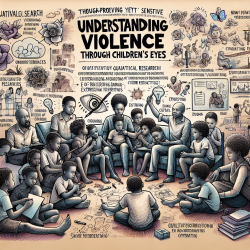As children grow into adolescence, they encounter a myriad of changes, both physically and emotionally. Among these changes is the way they process sensory information. Sensory processing refers to the brain's ability to recognize and organize sensory input from inside the body—such as head and body movement—and from the environment—like touch, taste, smell, sight, and hearing.
Typically, the brain filters out 95% of sensory information, focusing only on the 5% that is deemed important. However, problems arise when this filtering process is imbalanced: filtering too much can lead to under-responsiveness, while filtering too little can result in over-responsiveness.
The Impact of Sensory Processing Difficulties
Adolescents with sensory processing difficulties might exhibit a range of behaviors as they attempt to manage their sensory environment. These behaviors often fall into two categories: active and passive strategies.
- Active Strategies: Adolescents may avoid certain sensations due to hypersensitivity or seek out specific sensations either to drown out other stimuli or because they are not receiving enough input. For example, they might make preferred noises or fidget with objects to help focus.
- Passive Strategies: Some adolescents may appear withdrawn or disinterested due to under-responsiveness. They might also be easily distracted by sensory input if they are over-responsive.
Postural Control and Balance
Sensory processing difficulties can affect an adolescent's postural control and balance. Efficient organization of touch, visual, proprioceptive, and vestibular input is crucial for maintaining posture and balance. Children facing these challenges may exhibit signs like slouching, leaning on furniture for support, or appearing clumsy due to poor body awareness.
Praxis Difficulties
Praxis refers to the ability to conceptualize, plan, and execute movements. Adolescents with praxis difficulties may struggle with tasks requiring new motor skills. They might take longer to learn new skills such as tying shoelaces or riding a bike and often have low confidence in their motor abilities.
Sensory Overload
Sensory overload occurs when an adolescent becomes overwhelmed by excessive sensory input. This can trigger stress responses like fear, fight, flight, or freeze. Recognizing signs of sensory overload—such as changes in breathing patterns or muscle tension—can be pivotal in addressing these challenges effectively.
Coping Strategies for Adolescents
Developing self-reliance and independence is key for adolescents managing sensory processing difficulties. Here are some strategies that can help:
- Recognize Triggers: Adolescents should learn which sensations or activities are challenging and which help them stay organized.
- Coping Toolkit: Encourage the use of discreet coping strategies that can be employed anywhere without drawing attention.
- Communication: Teach adolescents how to communicate their needs effectively to teachers or employers.
The Role of Movement
Movement plays a critical role in regulating sensory systems. Encourage adolescents to incorporate enjoyable physical activities into their daily routines. Activities like cycling, swimming, or even dancing can help maintain balance and improve postural control while providing a calming effect on the nervous system.
Managing Multi-Sensory Environments
Older children often need to navigate complex environments like schools without constant adult supervision. Planning ahead and having escape strategies in place can alleviate stress and enhance coping mechanisms.
Conclusion
Navigating adolescence with sensory processing difficulties requires understanding and supportive strategies tailored to each individual's unique needs. By fostering awareness and equipping adolescents with effective coping tools, we can empower them towards greater independence and confidence.
For more information, please follow this link.










